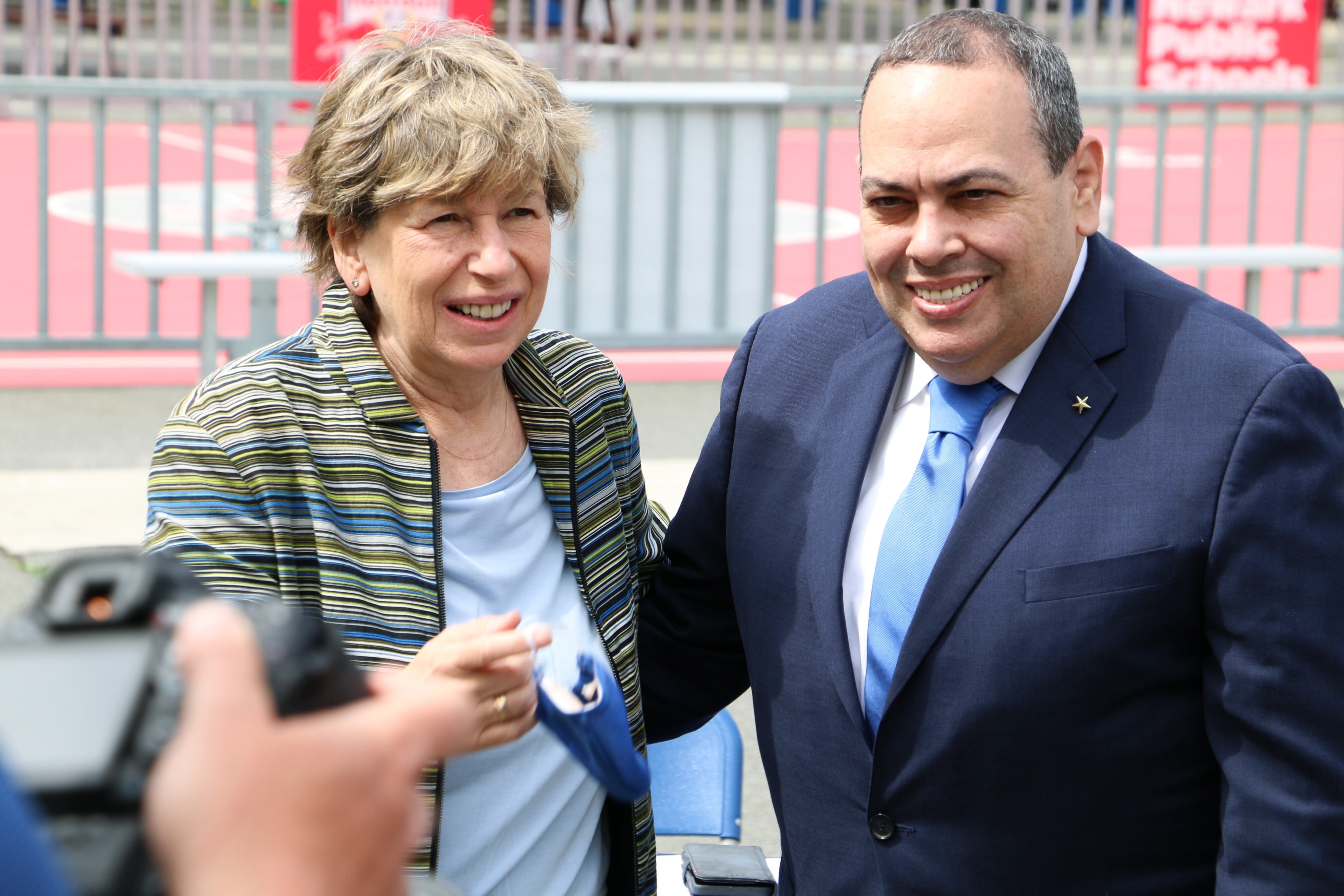As Newark schools inch back toward normalcy, the big question now is what to expect this fall.
Will students and staffers still be required to wear masks and socially distance? Will eligible students get vaccinated? And will parents who kept their children home this spring even after classrooms reopened be ready to send them back in September?
Those uncertainties hung in the air as Randi Weingarten, a national teachers union leader, visited a Newark school Monday. The visit was part of the union’s publicity campaign promoting educators’ role in reopening classrooms this spring and calling for a return to full-time in-person learning this fall.
“Next year: Full time, full on, everybody back,” said Weingarten, president of the American Federation of Teachers, during her visit to First Avenue School.
Weingarten’s push for fully in-person learning this fall follows criticism that teachers unions played a key role in delaying school reopenings this academic year as they fought for safety precautions that sometimes exceeded the recommendations of health experts. The Newark Teachers Union, which is an affiliate of the national union, twice opposed the district’s plans to reopen classrooms this school year.
The district ultimately kept most students out of classrooms for 13 months, until some returned part-time last month.
Now the tide is turning. As COVID-19 infections plummet and vaccination rates rise, Gov. Phil Murphy said last week that all New Jersey schools will operate entirely in person next school year and will not offer a remote option. Other states have issued similar orders, and New York City did so on Monday.
But the rush to declare that all students will learn in classrooms this fall has left some major questions unanswered. For instance, will masks and social distancing remain mandatory inside schools?
The federal Centers for Disease Control and Prevention recently said vaccinated people no longer need to wear masks in most indoor spaces — but quickly clarified that the guidance does not currently apply to schools. Now, the agency is working on guidance for next school year.
On Monday, Murphy said New Jersey’s mask mandate will lift on May 28, as will social distancing rules inside restaurants and other businesses. But the changes do not apply to schools or childcare centers, and the state has not said when new guidance will be available.
Weingarten, whose union represents some 1.7 million members, sent a letter to the C.D.C. last week seeking clarity on safety protocols for next school year. For her part, the union leader has said students should remain at least three feet apart in classrooms this fall — a recommendation that would force many schools to reduce class sizes and secure extra space.
“The vaccines have been a game-changer, but mitigation really matters,” Weingarten told Chalkbeat on Monday, adding that smaller class sizes will create safer and more effective learning environments.
She also said that she expects masking will continue to be mandated this fall in elementary schools, where most children will not be vaccinated.
Another looming question is what to do about families that remain hesitant to send their children back into classrooms.
A recent online poll commissioned by the American Federation of Teachers and other groups found that only 59% of Black parents and 72% of Hispanic parents feel comfortable sending their children back into schools full-time this fall. But those percentages shoot up if strict safety measures remain in place, including masks and physical distancing, the poll found.
The national union is launching a $5 million back-to-school campaign to reassure parents who are still wary about in-person learning. The outreach could include home visits by teachers and school walk-throughs, Weingarten said, adding that planning is currently underway.
“We must address those fears,” she wrote in a column about the campaign.
Yet another unknown is how many children ages 12 and up, who are now eligible for the vaccine, will receive it before next school year.
Just 28% of Newark residents are fully vaccinated — nearly 20 percentage points below the statewide share. The relatively slow vaccination pace in Newark suggests many eligible children and their parents might remain unvaccinated this fall.
Some school districts have used federal relief funds to promote vaccination; for instance, in Chicago, mobile vaccination sites have been parked outside schools. In Newark, the city has set up vaccination sites at two high schools, but the district has not launched a vaccination campaign aimed at students or their families.
“The district will continue to communicate all opportunities provided to residents and staff for vaccinations in Newark,” said spokesperson Valerie Merritt, adding that “deciding to vaccinate is extremely personal for all families.”
Only about 40% of Newark Public Schools students returned to classrooms last month. Yet the district has not publicly launched a campaign to address any lingering fears before the fall. Merritt said the district will keep families updated on plans for next school year.
Much of the outreach will likely fall to schools. First Avenue School’s principal, Rosa Branco, said her school will hold family meetings to explain the in-person safety procedures and answer questions.
“Just making them feel comfortable,” she said, “and letting them know that everything has really gone well since we opened.”
Newark Teachers Union President John Abeigon said he isn’t aware of any district plans to vaccinate students or reassure parents. But he said union members have done their part, with more than 80% now fully vaccinated, according to the union’s count. If more community members follow suit, schools might be able to relax their safety measures this fall, he added.
“If the number of vaccines in arms continues to rise,” he said, “the less restrictions we’ll have in September.”






